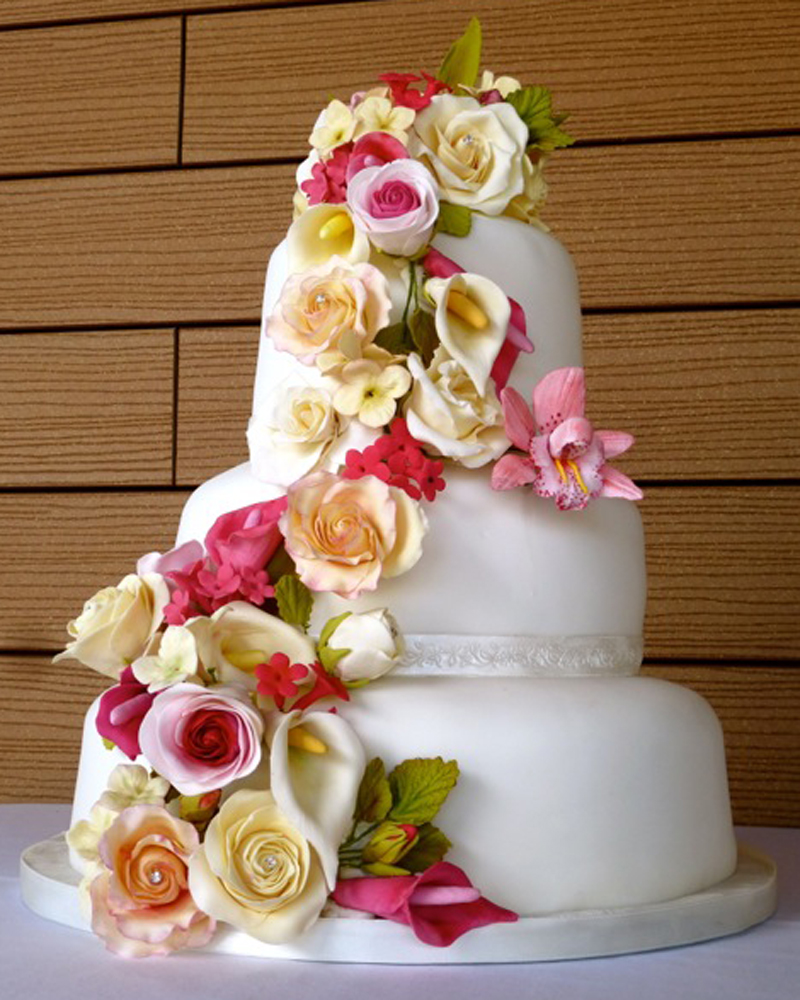5 beloved wedding cake traditions | Destination wedding Spain
The wedding planning process is underway and the excitement of your wedding is building and feels wonderful, a time filled with dreams and plans. But have you ever stopped to think about where some wedding traditions stem from? Specifically wedding cake traditions?

Whether having a destination wedding (may we suggest in Spain?) or a local celebration, wedding cakes have and always will be a wedding staple and so much more than just tasty desserts. In fact, the wedding cake has been a part of the nuptial ceremony since Ancient Rome, when marriage ceremonies ended with a scone-like wheat or barley cake broken over the bride’s head for luck and fertility.
The newlyweds would then eat a few crumbs together, and this was considered one of their first unified acts as a married couple. A “sweet” wedding cake tradition but no doubt less sugary than the work of arts we see (and taste) today.
As it’s always interesting to know where things originated, today we are going to take a look at five of the most beloved traditions of perhaps the most elegant part of the reception; The Wedding Cake.

-
Cutting the Wedding Cake
Once upon a time it was only the bride who cut the wedding cake, an act that symbolised her breaking through to womanhood. Nowadays, cutting the cake represents the first activity that the couple get to do together and is popular with many couples as it also provides a fabulous photo opportunity.

-
The Bride and Groom Feeding Each Other Cake
Another customary tradition is when the bride and groom feed each other a small bite of cake. This romantic and sweet gesture symbolises the commitment the couple has made to provide for one another and is also a show of love and affection.

-
Saving the top tier
Saving the top tier of a wedding cake originated in Great Britain in the 18th century and was saved by the couple to share at the christening of their first child. Nowadays couples often celebrate their first anniversary with a helping of their preserved wedding cake together, with some believing it to be an omen of good luck.

-
History of wedding cake toppers (Bride and Groom wedding figurines)
The miniature bride and groom came into play in the roaring 1920s, after World War I, where High Society in the U.S. adopted the custom of using figurines of the bride and groom atop the wedding cake.
Before then the wedding cakes were decorated with things like flowers, bells, or other small objects related to the bride and groom. Decorations that can still be seen as toppers on modern-day wedding cakes.

-
Three tiers
Apart from making it look pretty, a traditional wedding cake has three tiers and each tier of a wedding cake has its own “moment” to be eaten and significance. Tradition has it that the bottom tier is for eating at the ceremony, the middle tier to be eaten after the marriage ceremony and the top tier saved.
Another unusual wedding cake tradition, but not so much for the bridal couples themselves, rather for the bridesmaids or female wedding guests, is the belief that a person sleeping with a piece of wedding cake under her pillow will dream of her future partner that night. This custom dates back almost 300 years!
What we do know is that the wedding cake symbolises prosperity, good luck and fertility and our wedding cake supplies always make sure to use the best ingredients available so that the marriage will be a long lasting and happy one.
